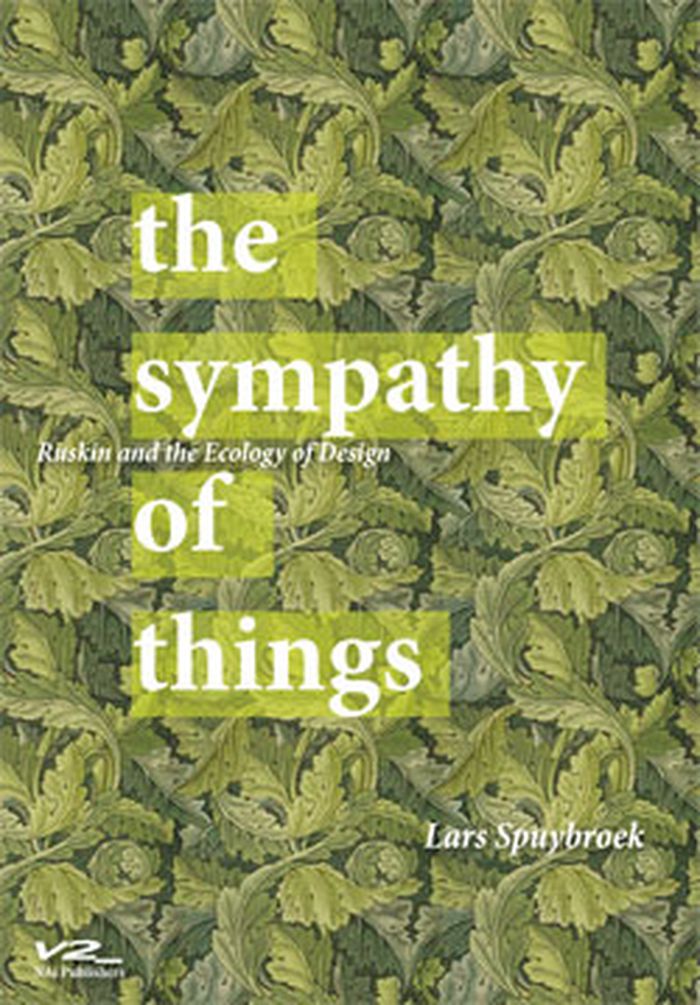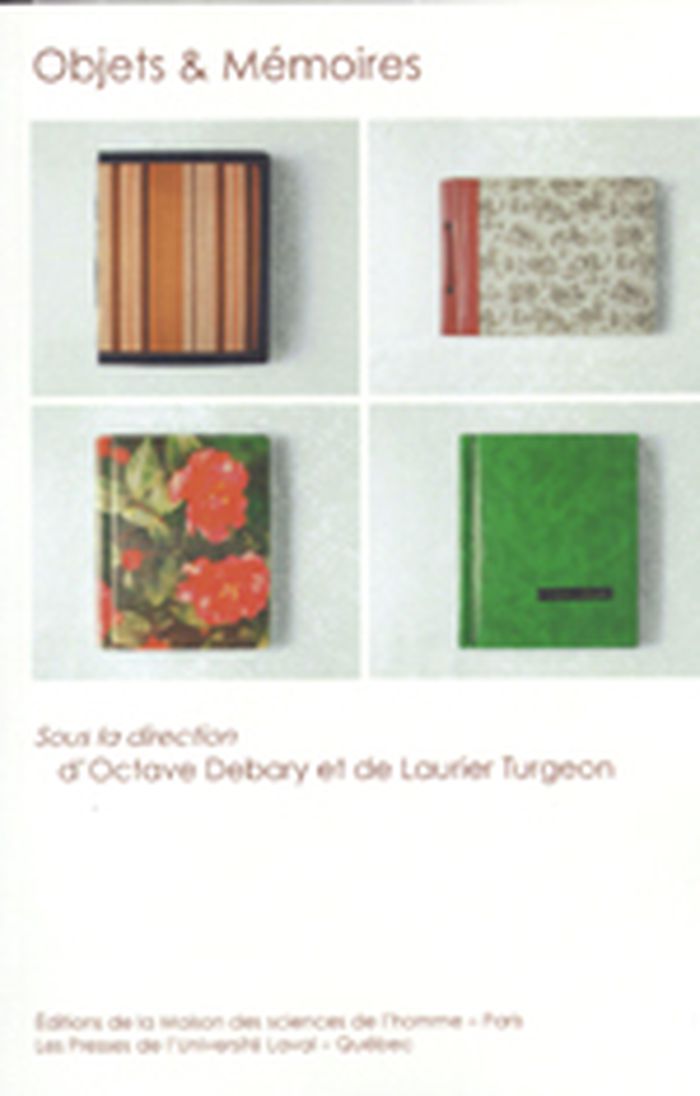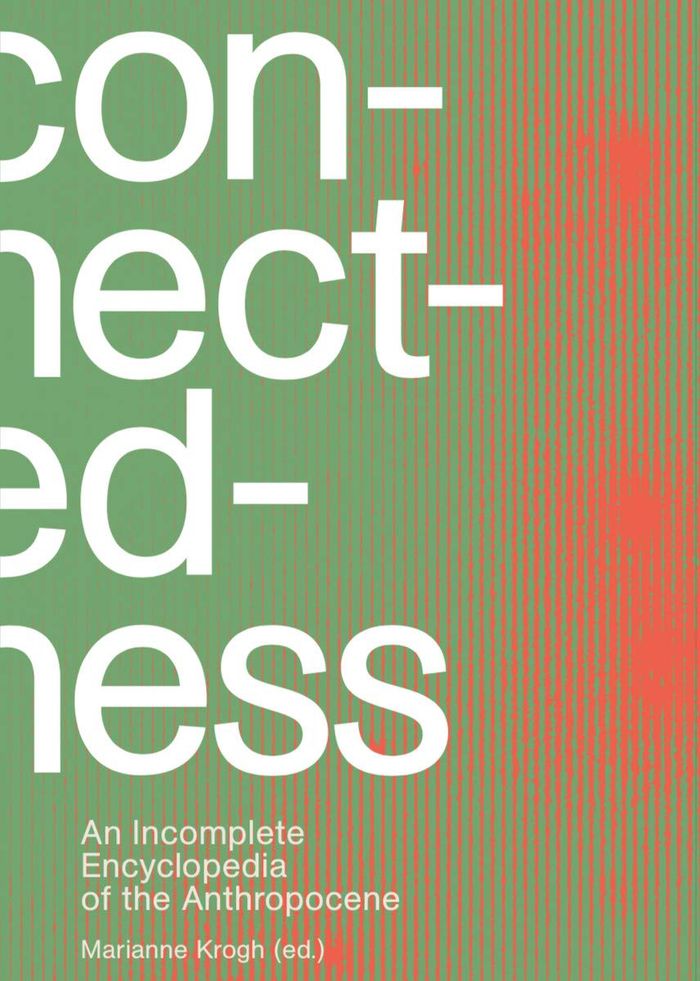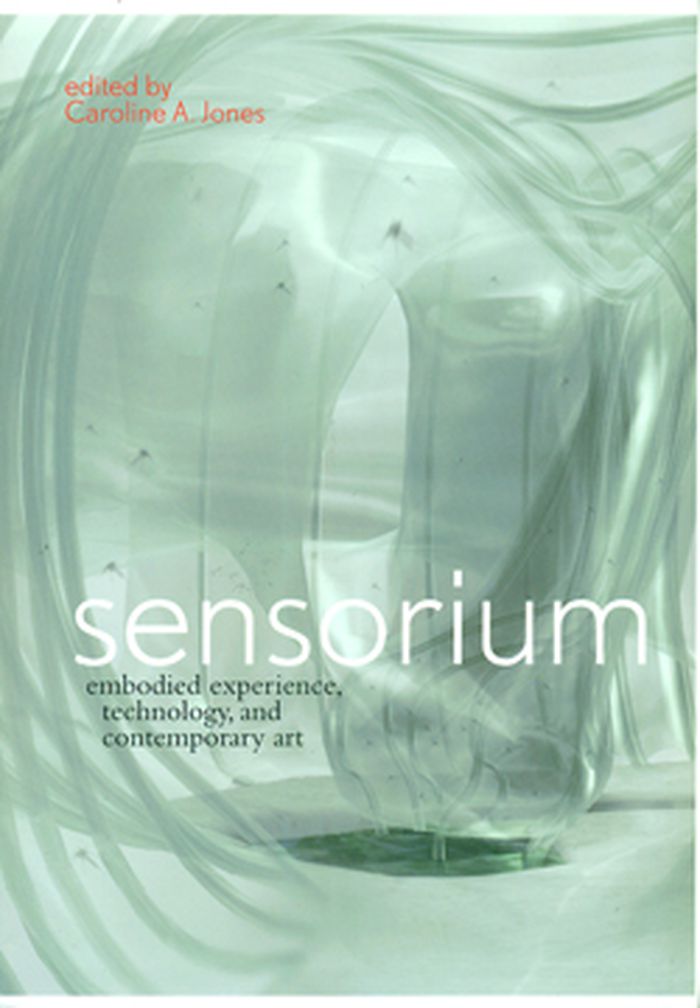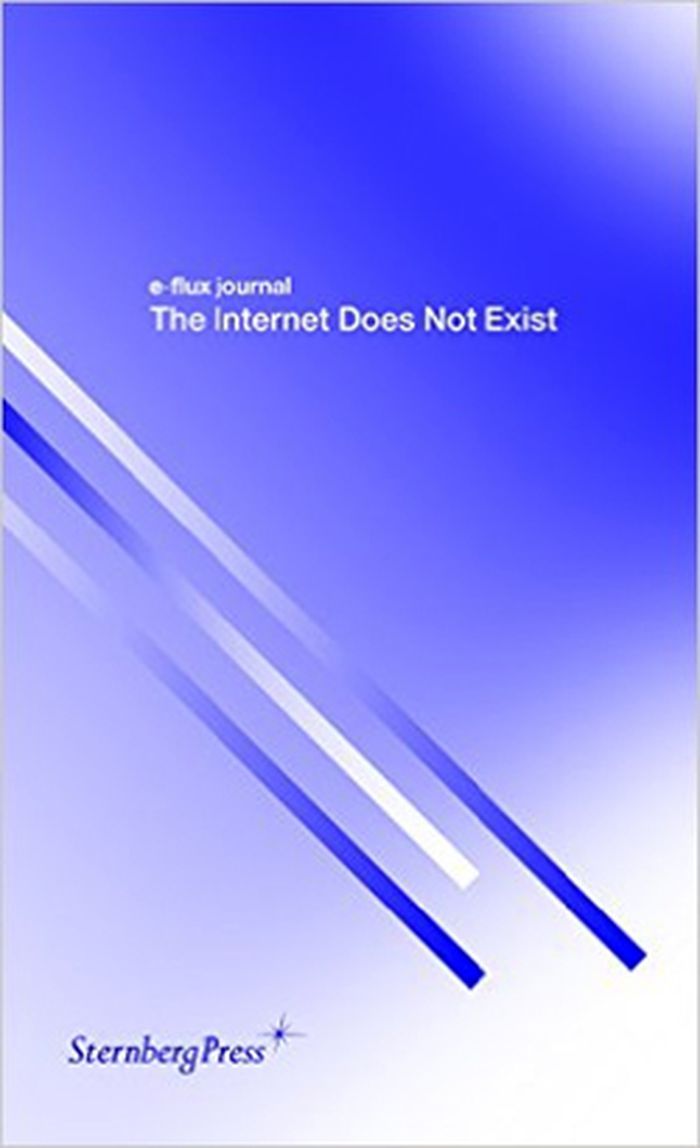$22.95
(disponible sur commande)
Résumé:
"Bad new days" examines the evolution of art and criticism in Western Europe and North America over the last twenty-five years, exploring their dynamic relation to the general condition of emergency instilled by neoliberalism and the war on terror. Considering the work of artists such as Thomas Hirschhorn, Tacita Dean, and Isa Genzken, and the writing of thinkers like(...)
Bad new days: art, criticism, emergency
Actions:
Prix:
$22.95
(disponible sur commande)
Résumé:
"Bad new days" examines the evolution of art and criticism in Western Europe and North America over the last twenty-five years, exploring their dynamic relation to the general condition of emergency instilled by neoliberalism and the war on terror. Considering the work of artists such as Thomas Hirschhorn, Tacita Dean, and Isa Genzken, and the writing of thinkers like Jacques Rancière, Bruno Latour, and Giorgio Agamben, Hal Foster shows the ways in which art has anticipated this condition, at times resisting the collapse of the social contract or gesturing toward its repair; at other times burlesquing it. Against the claim that art making has become so heterogeneous as to defy historical analysis, Foster argues that the critic must still articulate a clear account of the contemporary in all its complexity. To that end, he offers several paradigms for the art of recent years, which he terms “abject,” “archival,” “mimetic,” and “precarious.”
Théorie de l’art
$48.95
(disponible sur commande)
Résumé:
In The Sympathy of Things, Lars Spuybroek argues that we must "undo" the twentieth century - the age in which the eighteenth-century ideal of the Sublime became a technological reality. Spuybroek returns to the insights of the great nineteenth-century art writer John Ruskin, for whom beauty always comprises variation, imperfection and fragility. Spuybroek argues that(...)
The sympathy of things: Ruskin and the ecology of design
Actions:
Prix:
$48.95
(disponible sur commande)
Résumé:
In The Sympathy of Things, Lars Spuybroek argues that we must "undo" the twentieth century - the age in which the eighteenth-century ideal of the Sublime became a technological reality. Spuybroek returns to the insights of the great nineteenth-century art writer John Ruskin, for whom beauty always comprises variation, imperfection and fragility. Spuybroek argues that these three concepts not only define relations between humans and their designed products but between all things: "sympathy is what things feel when they shape each other." Spuybroek then compares five twinned themes in Ruskin - the Gothic and work, ornament and matter, sympathy and abstraction, the picturesque and time, ecology and design - with later philosophers and theorists such as William James and Bruno Latour.
Théorie de l’architecture
Objets & mémoires
$30.00
(disponible sur commande)
Résumé:
Objets perdus, objets retrouvés ? Subrepticement, le passé se loge dans les objets de la vie quotidienne, dans les sensations qu'ils éveillent et qui lui servent de supports mnémoniques. La recherche proustienne du temps perdu peut se décliner sous l'angle de l'objet. Cet ouvrage a lancé l'invitation à des chercheurs, spécialistes de ces questions, de développer la(...)
Théorie de l’architecture
juin 2007, Paris, Québec
Objets & mémoires
Actions:
Prix:
$30.00
(disponible sur commande)
Résumé:
Objets perdus, objets retrouvés ? Subrepticement, le passé se loge dans les objets de la vie quotidienne, dans les sensations qu'ils éveillent et qui lui servent de supports mnémoniques. La recherche proustienne du temps perdu peut se décliner sous l'angle de l'objet. Cet ouvrage a lancé l'invitation à des chercheurs, spécialistes de ces questions, de développer la relation qu'ils établissent entre objets et mémoires. Plusieurs perspectives contemporaines en sciences sociales proposent de dépasser une lecture symboliste des objets en défendant l'idée selon laquelle ils sont au cœur des rapports sociaux. En s'attachant à décrire les dispositifs auxquels ils prennent part, ces théories donnent aux objets une position d'égalité avec les humains dans leur capacité à construire le monde. Ce rôle leur confère une place privilégiée dans la mise en mémoire de l'histoire. Objets refuges de l'identité, du patrimoine, de l'art, de la valeur marchande, des souvenirs familiaux, tous concentrent des formes d'investissements. De l'investissement compensatoire à la consolation, à la délégation morale ou aux régimes de valeurs biographiques, ces postures impliquent différents traitements : passion, haine, fétichisme ou affranchissement de l'objet. Les auteurs : James Clifford, Michèle de la Pradelle, Octave Debary, Jacques Hainard, Janet Hoskins, Emmanuelle Lallement, Bruno Latour, Gérard Lenclud, Thierry Paquot, Dominique Poulot, Arnaud Tellier, Laurier Turgeon, Jean-Philippe Uzel
Théorie de l’architecture
$55.95
(disponible sur commande)
Résumé:
Surveying humanity's impact on the planet, with contributions from Donna Haraway, Bill McKibben, Greta Thunberg, Bruno Latour, Alice Waters and others. This book, in the form of an encyclopedia, considers the totality of issues surrounding the Anthropocene, that geologic era characterized by humanity's vast impact on the Earth. ''Connectedness'' acknowledges the(...)
septembre 2020
Connectedness: An incomplete encyclopedia of the Anthropocene
Actions:
Prix:
$55.95
(disponible sur commande)
Résumé:
Surveying humanity's impact on the planet, with contributions from Donna Haraway, Bill McKibben, Greta Thunberg, Bruno Latour, Alice Waters and others. This book, in the form of an encyclopedia, considers the totality of issues surrounding the Anthropocene, that geologic era characterized by humanity's vast impact on the Earth. ''Connectedness'' acknowledges the incomplete nature of its project seeing as how this riotous era is not yet finished. With contributions by Greta Thunberg, Bill McKibben, Alice Waters, Tomás Saraceno, Björk and many others, this publication consists of approximately 100 entries, arranged alphabetically, each reflecting on questions, phenomena, terms, possibilities and theories associated with the Anthropocene. Examples of entries include Air, Borders and Coexistence, as well as more complex subjects such as Donna Haraway on the Chthulucene or Anders Blok on Climate Risk Communities. The content ranges from scientific to cultural-theoretical and artistic contributions featuring a wide span of scholars, philosophers, anthropologists, scientists, authors, artists and others. The book accompanies the exhibition at the Danish Pavilion at the 2020 Venice Architectural Biennale.
$37.50
(disponible sur commande)
Résumé:
The relationship between the body and electronic technology, extensively theorized through the 1980s and 1990s, has reached a new technosensual comfort zone in the early twenty-first century. In "Sensorium", contemporary artists and writers explore the implications of the techno-human interface. Ten artists, chosen by an international team of curators, offer their own(...)
octobre 2006, Cambridge, Mass.
Sensorium : embodied experience, technology, and contemporary art
Actions:
Prix:
$37.50
(disponible sur commande)
Résumé:
The relationship between the body and electronic technology, extensively theorized through the 1980s and 1990s, has reached a new technosensual comfort zone in the early twenty-first century. In "Sensorium", contemporary artists and writers explore the implications of the techno-human interface. Ten artists, chosen by an international team of curators, offer their own edgy investigations of embodied technology and the technologized body. These range from Matthieu Briand's experiment in "controlled schizophrenia" and Janet Cardiff and Georges Bures Miller's uneasy psychological soundscapes to Bruce Nauman's uncanny night visions and François Roche's destabilized architecture. The art in "Sensorium" - which accompanies an exhibition at the MIT List Visual Arts Center - captures the aesthetic attitude of this hybrid moment, when modernist segmentation of the senses is giving way to dramatic multisensory mixes or transpositions. Artwork by each artist appears with an analytical essay by a curator, all of it prefaced by an anchoring essay on "The Mediated Sensorium" by Caroline Jones. In the second half of "Sensorium", scholars, scientists, and writers contribute entries to an "Abecedarius of the New Sensorium." These short, playful pieces include Bruno Latour on "Air," Barbara Maria Stafford on "Hedonics," Michel Foucault (from a little-known 1966 radio lecture) on the "Utopian Body," Donna Haraway on "Compoundings," and Neal Stephenson on the "Viral." Sensorium is both forensic and diagnostic, viewing the culture of the technologized body from the inside, by means of contemporary artists' provocations, and from a distance, in essays that situate it historically and intellectually.
$22.00
(disponible sur commande)
Résumé:
The internet does not exist. Maybe it did exist only a short time ago, but now it only remains as a blur, a cloud, a friend, a deadline, a redirect, or a 404. If it ever existed, we couldn't see it. Because it has no shape. It has no face, just this name that describes everything and nothing at the same time. Yet we are still trying to climb onboard, to get inside, to be(...)
E-Flux journal: the internet does not exist
Actions:
Prix:
$22.00
(disponible sur commande)
Résumé:
The internet does not exist. Maybe it did exist only a short time ago, but now it only remains as a blur, a cloud, a friend, a deadline, a redirect, or a 404. If it ever existed, we couldn't see it. Because it has no shape. It has no face, just this name that describes everything and nothing at the same time. Yet we are still trying to climb onboard, to get inside, to be part of the network, to get in on the language game, to show up on searches, to appear to exist. But we will never get inside of something that isn t there. All this time we ve been bemoaning the death of any critical outside position, we should have taken a good look at information networks. Just try to get in. You can t. Networks are all edges, as Bruno Latour points out. We thought there were windows but actually they re mirrors. And in the meantime we are being faced with more and more not just information, but the world itself.
Théorie/ philosophie
livres
$64.00
(disponible sur commande)
Résumé:
Between the disciplines of art history and the history of science lies a growing field of inquiry into what science and art share as both image-making and knowledge-producing activities. The contributors of Picturing Science, Producing Art occupy this intermediate zone to analyze both scientific and aesthetic representations, utilizing disciplinary perspectives that range(...)
Picturing science producing art
Actions:
Prix:
$64.00
(disponible sur commande)
Résumé:
Between the disciplines of art history and the history of science lies a growing field of inquiry into what science and art share as both image-making and knowledge-producing activities. The contributors of Picturing Science, Producing Art occupy this intermediate zone to analyze both scientific and aesthetic representations, utilizing disciplinary perspectives that range from art history to sociology, history and philosophy of science to gender studies, cultural history to the philosophy of mind. Organized in five sites--Styles, The Body, Seeing Wonders, Objectivity/Subjectivity, and Cultures of Vision--their topics extend from Cinquecento theories of female reproduction to the technologies of cloning, from medieval depictions of the stigmata to electrical metaphors for sex, from astronomical drawings to radioencephalography, from Phoenician griffons carved in ivory to factories cast in concrete. The internationally renowned contributors go beyond both science wars and culture wars by exploring substantive links between systems of visual representation and knowledge in science and art. Contributors include Svetlana Alpers, Jonathan Crary, Arnold Davidson, Carlo Ginzburg, Donna Haraway, Bruno Latour, and Simon Schaffer.
livres
juin 1998
Immaterialism
$13.95
(disponible en magasin)
Résumé:
What objects exist in the social world and how should we understand them? Is a specific Pizza Hut restaurant as real as the employees, tables, napkins and pizzas of which it is composed, and as real as the Pizza Hut corporation with its headquarters in Wichita, the United States, the planet Earth and the social and economic impact of the restaurant on the lives of its(...)
Immaterialism
Actions:
Prix:
$13.95
(disponible en magasin)
Résumé:
What objects exist in the social world and how should we understand them? Is a specific Pizza Hut restaurant as real as the employees, tables, napkins and pizzas of which it is composed, and as real as the Pizza Hut corporation with its headquarters in Wichita, the United States, the planet Earth and the social and economic impact of the restaurant on the lives of its employees and customers? In this book the founder of object-oriented philosophy develops his approach in order to shed light on the nature and status of objects in social life. While it is often assumed that an interest in objects amounts to a form of materialism, Harman rejects this view and develops instead an "immaterialist" method. By examining the work of leading contemporary thinkers such as Bruno Latour and Levi Bryant, he develops a forceful critique of "actor-network theory." In an extended discussion of Leibniz’s famous example of the Dutch East India Company, Harman argues that this company qualifies for objecthood neither through "what it is" or "what it does," but through its irreducibility to either of these forms. The phases of its life, argues Harman, are not demarcated primarily by dramatic incidents but by moments of symbiosis, a term he draws from the biologist Lynn Margulis. This book provides a key counterpoint to the now ubiquitous social theories of constant change, holistic networks, performative identities, and the construction of things by human practice. It will appeal to anyone interested in cutting-edge debates in philosophy and social and cultural theory.
Théorie/ philosophie

